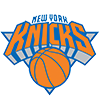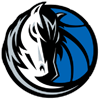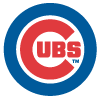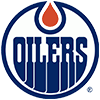I was recently tasked with ranking my Top 90 starting pitchers. No big deal, right? I do projections, so all I need to do is run the numbers and pick out the first 90. Easy peasy.
I wish.
I won't bore you with the nuances I added to my projection process, at least not yet. Let's just say I struggled mightily with some guys, from the top of the list to the back end. Here they are, with my rank. At least for now.
Full disclosure, I was directed to lean more to points scoring, which can often differ from roto depending on the format. Most systems favor innings and strikeouts, making it easier to rank Buehler here, with only Gerrit Cole (1st) and Corbin Burnes (2nd) ahead of him. The problem is I have Buehler a few spots lower in 5x5. While it may seem like a couple of spots is no big deal, in this area of the rankings, a difference of just one spot is equivalent to $2 or $3 difference in earnings. As such, while the difference between being the No. 3 and No. 6 pitcher is only three places, saying it's $5-$7 puts it in better perspective.
The reason this is important is because the market will place Buehler in the top three in 5x5 scoring. While I don't aim to have my ranks mimic the market, I identify outliers to determine if I'm missing something. The catch with Buehler is he's
I was recently tasked with ranking my Top 90 starting pitchers. No big deal, right? I do projections, so all I need to do is run the numbers and pick out the first 90. Easy peasy.
I wish.
I won't bore you with the nuances I added to my projection process, at least not yet. Let's just say I struggled mightily with some guys, from the top of the list to the back end. Here they are, with my rank. At least for now.
Full disclosure, I was directed to lean more to points scoring, which can often differ from roto depending on the format. Most systems favor innings and strikeouts, making it easier to rank Buehler here, with only Gerrit Cole (1st) and Corbin Burnes (2nd) ahead of him. The problem is I have Buehler a few spots lower in 5x5. While it may seem like a couple of spots is no big deal, in this area of the rankings, a difference of just one spot is equivalent to $2 or $3 difference in earnings. As such, while the difference between being the No. 3 and No. 6 pitcher is only three places, saying it's $5-$7 puts it in better perspective.
The reason this is important is because the market will place Buehler in the top three in 5x5 scoring. While I don't aim to have my ranks mimic the market, I identify outliers to determine if I'm missing something. The catch with Buehler is he's outpitched his peripherals, and my system regresses performance towards what's expected while the market is drafting his actual outcomes.
So the question is, am I wrong to regress Buehler or is he doing something to defeat regression?
If this were a lesser arm, we'd be seeing a plethora of offseason pieces about how you should avoid this guy. It's become commonplace. However, the industry is hesitant to hold the studs to the same standards. He's not lucky, he's just that good. Um, why can't someone be good and lucky?
On the other hand, the means with which we identify "luck" are evolving. What if we just haven't unearthed an algorithm to properly capture what a pitcher is doing to seemingly outpitch his skills? What if the expected ERA calculations (FIP, xFIP, SIERA, Statcast xERA, DRA, etc.) are wrong? Sheesh, just the fact there are so many suggests we haven't found the holy grail.
Bringing this back to Buehler, his combined ERA since 2019 is 2.89. This is flanked by a 3.20 FIP, 3.52 xFIP and 3.64 SIERA. Add a run to each and most would be screaming, "Avoid, he's been lucky!"
Driving the perceived good fortune is a .262 BABIP and 75.5% LOB mark. The league averages over this stretch are .295 and 72.1%. Better pitchers can carry a LOB% up to 78%, so I'm not worried about Buehler's better than average level there. The issue is BABIP. We have learned a lot since Voros McCracken unleashed DIPS theory, which is based around the assumption all pitchers nestle near a .300 BABIP. The simplest deviation is flyball pitchers tend to be lower than the average, while groundballers eclipse the average. The current focus is on the ability to induce weak contact.
Statcast has entered the chat.
Folks much smarter than me are fine-tuning ways to capture how pitchers can induce weak contact and how much that affects BABIP. Personal research suggests exit velocity is much more important for power than BABIP.
Until proven otherwise, I'm going by the credo a pitcher maintains a low BABIP until he doesn't. That's a cute way of saying, "until his luck runs out."
Hmm, that didn't take long to bore you with the primary adjustment to my projections as I tweaked things to get a plausible (in my mind) BABIP, then adjusted the LOB mark as necessary. Doing this for Buehler landed him in the 3.29 ERA range, almost half a run higher than his three-year mark. The question I self-posed was, do I nudge his BABIP and LOB a bit more to the lucky side or stick to my principles and regress? I chose the latter and am thus ready for being called out for my low Buehler rank.
Don't worry, the other 14 examples won't require 700-plus words to explain, as this BABIP/LOB exercise is at the root of several (but not all) of the ensuing troublemakers.
5. Jacob deGrom
While there is some level of the above regression conundrum in play, the bigger issue is health and FOMO. For years, Mike Trout was drafted in the top five despite a checkered injury history. Why? Fear of missing out. What if this is the year he stays healthy? I suspect we're at that point with deGrom. We'd be pleading to downgrade anyone else coming off the issues he incurred last season. But it's deGrom, so what if he only misses a start or two? Perhaps seeing how he looks in the spring will clarify the situation, but my deadline was mid-November, so I wasn't afforded that luxury. To be honest, I think I'm being too generous with 143 innings. But man, what if he tosses 180?
18. Robbie Ray
I should just drop the mic and walk away; this one is clear. No? OK, I'll hang around.
Between 2015 and 2019, Ray walked between 9.0 percent and 13.3 percent of batters faced per year. This spiked to 17.9 percent in the pandemic season. In 2021, Ray walked hitters only 6.9 percent of the time. Can he keep up the new rate, and if not, what is the landing point?
The easy way out is to let the weighted average do the heavy lifting, but is that best? If Ray figured something out, shouldn't his 2022 BB% be closer to 2021 than the weighted average indicates?
The fine folks at BaseballHQ have published research showing there is a strong correlation between BB% and Ball%. Finding pitchers with mismatched levels is a clever means of identifying pitchers with a lucky or unlucky walk rate. If Ray's 2021 BB% shows signs of good luck, regression is in order. It's not the only factor when deciding upon his projected mark, but it's a good starting point.
Season | BB% | Ball% |
|---|---|---|
2015 | 9.00% | 36.73% |
2016 | 9.10% | 35.93% |
2017 | 10.70% | 37.20% |
2018 | 13.30% | 38.30% |
2019 | 11.20% | 37.34% |
2020 | 17.90% | 42.86% |
2021 | 6.90% | 33.97% |
Ah, fiddlesticks. Ray's BB% and Ball% correlation coefficient is .98. He earned every bit of his 2021 control gains.
Let's get granular and look at the usage and Ball% of his pitch mix.
| Year | 4Seam% | 4SBall% | 2Seam% | 2SBall% | Slider% | SLBall% | Curve% | CVBall% | Change% | CHBall% |
|---|---|---|---|---|---|---|---|---|---|---|
2015 | 46.1% | 34.4% | 25.8% | 39.1% | 20.1% | 35.5% | 8.0% | 43.6% | ||
2016 | 46.5% | 33.6% | 24.6% | 33.3% | 22.6% | 39.4% | 6.3% | 47.2% | ||
2017 | 56.5% | 35.0% | 2.7% | 44.4% | 21.2% | 41.4% | 19.6% | 38.1% | ||
2018 | 53.3% | 37.3% | 25.8% | 40.4% | 20.8% | 39.9% | ||||
2019 | 42.7% | 34.5% | 10.0% | 33.0% | 30.8% | 41.1% | 16.5% | 40.7% | ||
2020 | 47.3% | 41.6% | 3.7% | 35.9% | 29.4% | 45.4% | 16.9% | 41.7% | 2.7% | 55.2% |
2021 | 59.4% | 29.8% | 30.8% | 38.5% | 6.0% | 38.6% | 3.6% | 57.0% |
While it's apparent Ray's control gains were across the board, trading some curves for fastballs while significantly honing the control of his rising fastball keyed his drop in free passes. Ergo, Ray's ability to maintain his four-seam control will drive his 2022 walk rate. Did he change the way he threw the pitch?
Year | Vel | Spin |
|---|---|---|
2015 | 94.1 | 2519.6 |
2016 | 94.9 | 2566.3 |
2017 | 94 | 2276 |
2018 | 93.6 | 2268.8 |
2019 | 92.4 | 2256.8 |
2020 | 93.9 | 2419.1 |
2021 | 94.8 | 2271.8 |
There isn't anything standing out other than last season, Ray's velocity was as high as it's been since 2016, but the spin rate wasn't as high. Perhaps this combination yielded better control.
Let's look at one more factor: the horizontal and vertical location of his fastball.
Horizontal | Vertical | |||||
|---|---|---|---|---|---|---|
Year | Inner3rd | Middle3rd | Outer3rd | Lower3rd | Middle3rd | Upper3rd |
2015 | 28.9% | 25.5% | 45.6% | 32.8% | 32.9% | 34.4% |
2016 | 41.4% | 24.8% | 33.8% | 30.5% | 33.9% | 35.6% |
2017 | 30.6% | 25.2% | 44.2% | 27.4% | 32.3% | 40.3% |
2018 | 30.5% | 25.3% | 44.2% | 22.1% | 34.0% | 43.9% |
2019 | 43.1% | 24.1% | 32.8% | 20.9% | 32.5% | 46.6% |
2020 | 37.8% | 25.4% | 36.8% | 15.7% | 31.8% | 52.5% |
2021 | 37.0% | 29.0% | 34.0% | 18.4% | 37.1% | 44.5% |
Now we're onto something. Breaking the zone into nine quadrants, Ray located middle-middle far more than usual. Was this by design or did he stop nibbling and just try to throw a strike and let his natural movement do its thing? As an aside, this helps explain his continued high home run rate, as Ray rarely threw his fastball down in the zone.
The beauty of this analysis is it's open to interpretation, though I may have missed a report explaining Ray's change in location. Even so, my take is with so much of Ray's control reliant upon continued location of his fastball, some give back is to be expected.
Applying the weighted average I used for 2022 projections would have rendered a 10.0 percent walk rate. My number is 8.5 percent, so I gave Ray some credit for the improvement, but docked him a bit from last season's 6.9 percent. I struggled with how much until I landed on an overall skill set that passes the sniff test. Since BB% affects both ERA and WHIP, a small change can manifest in several rankings spots.
24. Logan Webb
Ranking Webb comes down to how much trust is put in his 2021 compared to previous seasons. Here I won't show my math, but investigating his pitch mix and what Webb did differently, along with reading some accounts of his season, my lean is he took the next step and should continue to grow. His increased dominance and higher groundball rate were key (though I consider groundball rate more of a trait than skill, since flyballs can be beneficial in big parks when you have a solid outfield defense behind you). The problem is, coming to this conclusion entails ignoring a lot of what Webb did before last season. That's strictly a subjective call, and dangerous, but one I'm willing to make.
32. Dylan Cease
Cease is a good example of adjustments coming from listening to the market, as my initial rank was far less optimistic. That said, there is a contingent who favor Cease even more. He clearly exhibited growth, and his 3.91 ERA was deemed artificially high by his estimators (3.40 FIP, 3.72 xFIP, 3.57 SIERA). I landed on a 3.94 mark for 2022, which is derived from using his estimators as a foundation, then giving back some of his K% and BB% improvement. Others will peg his ERA closer to the 3.50 suggested by the expected marks. As with Webb, projecting Cease involved pretending much of what he did leading into last season never happened. Man, I wish I I could do that for myself.
You know what? This is getting longer than I planned, so let's make it a two-parter. I have 10 more names to discuss, so let the suspense build.



































